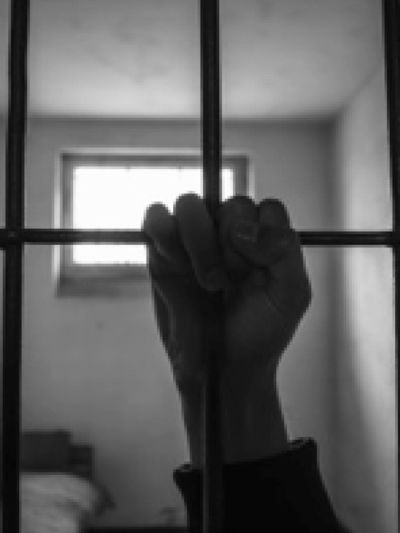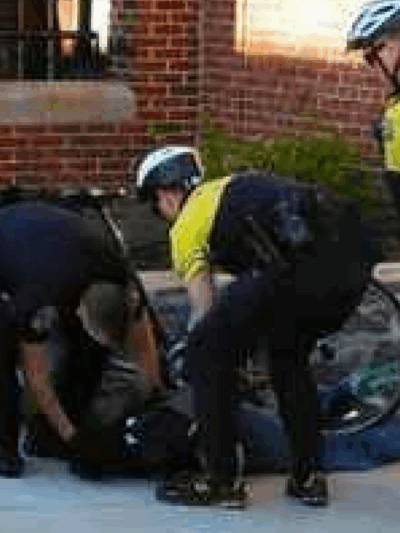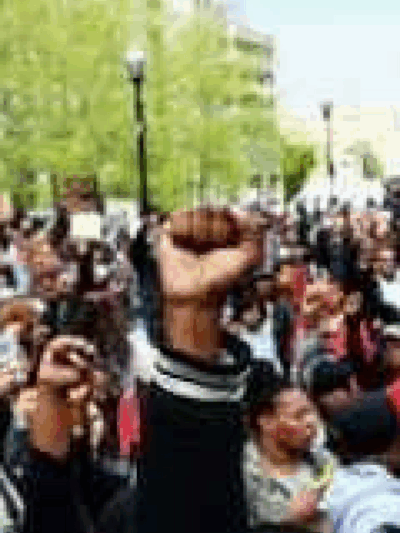News & Commentary
24 Hours Can Make All the Difference
Just one 24 hour period in my work this week showed how dangerously misguided Baltimore leaders continue to be in their efforts to reduce violence. They are looking once again to "tough on crime" policies that lock up more Black residents, for longer periods of time.
By Meredith Curtis Goode

Baltimore City Cannot Evade Responsibility For The Gun Trace Task Force
When Baltimore City’s chief lawyer Andre Davis reaffirmed several weeks ago that the City would not always agree to pay punitive damages judgments awarded against Baltimore Police Officers who intentionally and flagrantly abuse their authority, many people in Baltimore, including us at the ACLU of Maryland, cheered. The hope was that holding officers personally accountable for paying those (very rare) punitive damages would help deter that kind of egregious misconduct. So when the City announced after the verdict in the Gun Trace Task Force (GTTF) trial that it would not pay any damages awarded against the officers who plead or were found guilty, it is not surprising that some people also saw that as a step forward for individual police accountability. But it isn’t. Instead, it is a transparent attempt to again shift the cost of the BPD’s own repeated and systemic failures onto the people who have been victimized.
By David Rocah

Baltimore Police Secretly Running Aerial Mass-Surveillance Eye in the Sky
Bloomberg Businessweek reported late Tuesday that the Baltimore police have been subjecting that city to a vast and powerful aerial surveillance system since January, without telling, let alone asking, the public that they serve. This is a big deal.

OPED in Washington Post: Maryland has started on prison reform. But what about the thousands in jails?
This year, Maryland experienced the beginning of a historic shift from a failed tough-on-crime approach that has swelled our prisons - mostly with poor black and brown people - and emptied our coffers, toward a smarter, evidence-based and more humane approach to justice. That new approach promises to reduce the incarcerated population, reduce recidivism by giving people returning to their communities from jail or prison the support they need to avoid future entanglement with the criminal-justice system and reduce the unconscionable racial and socioeconomic biases that permeate and delegitimize our justice system.
By Toni Holness

On what's "reasonable" and the breakdown of police discipline
Although all eyes are understandably focused on Officer William Porter's guilt or innocence related to Freddie Gray's death, the defense case last week featured disturbing testimony from senior Baltimore Police commanders that should not be overlooked, regardless of the outcome of the trial. Former Baltimore Police Col. Timothy Longo testified that it was reasonable for Porter to be afraid of Freddie Gray, whose legs were shackled, whose hands were cuffed behind his back, and who had not attacked or threatened Porter. In fact Longo claimed that it was "objectively reasonable" for Porter to be so afraid that he could ignore the Department's General Orders requiring detainees to be put in a seatbelt in the transport van. This is - or should be - unbelievable. Equally shocking, Justin Reynolds, a current Baltimore Police Captain, took the witness stand and proclaimed that the police department's General Orders are not actually orders that must be followed, but just suggestions that officers can ignore.In every other circumstance, BPD holds out its General Orders as essential policies that govern police conduct and protect both citizenry and police. In this case, had Freddie Gray been properly belted in according to police protocol, he would not have suffered the catastrophic injury that ended his life.If senior police officials view this fear of Freddie Gray as reasonable, then the standard is completely meaningless, and it is hard to imagine any circumstance in which police officers' fears, however irrational, are not justified. And if this "reasonable" fear is itself a basis for ignoring the rules that are supposed to govern police behavior, then ... there are no rules for police? Even when someone dies as a result?No wonder so many people, particularly the Black and Brown people who are far more likely to be regarded by police as inherently suspicious and to be subjected to police misconduct, don't trust police to police themselves when accused of misconduct and excessive force. And if this is the testimony of BPD officials - a police department governed not by rules, but the whims and implicit bias of officers - then we really shouldn't trust the police to investigate themselves and claim that the system will take care of the "few bad apples." As a system, police discipline is broken. Maryland needs real police accountability reform and we need it now.

20 years in prison for having less than a quarter ounce of pot!?
It's hard to believe, but as the Baltimore Sun recently reported, Ronald Hammond is serving 20 years in prison for possessing less than a quarter ounce of marijuana - an amount so small that it's no longer a criminal offense in Maryland - because his guilty plea to a 2012 marijuana possession charge violated the terms of a ridiculously harsh 2010 probation sentence for selling $40 worth of cocaine.

Stay Informed
Sign up to be the first to hear about how to take action.
By completing this form, I agree to receive occasional emails per the terms of the ACLU’s privacy statement.
By completing this form, I agree to receive occasional emails per the terms of the ACLU’s privacy statement.


